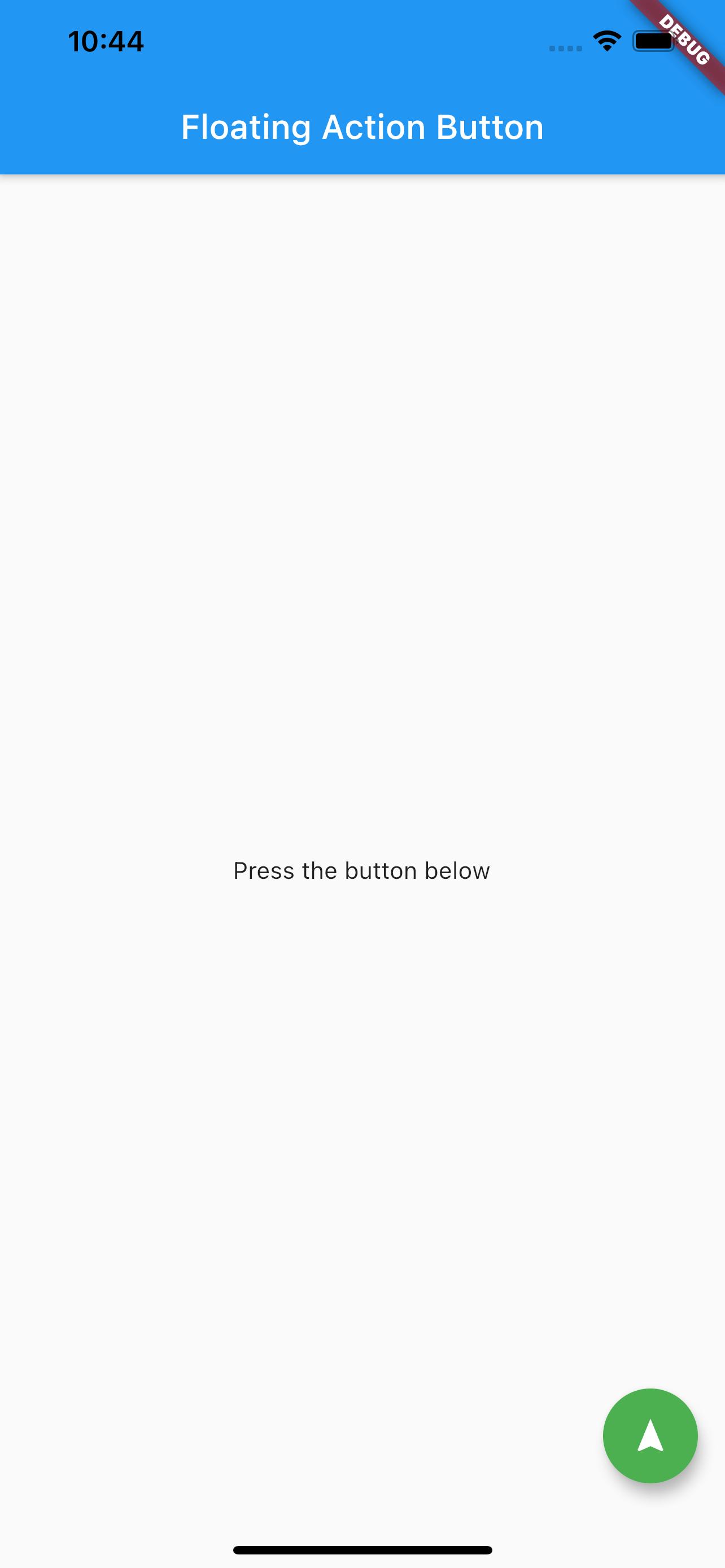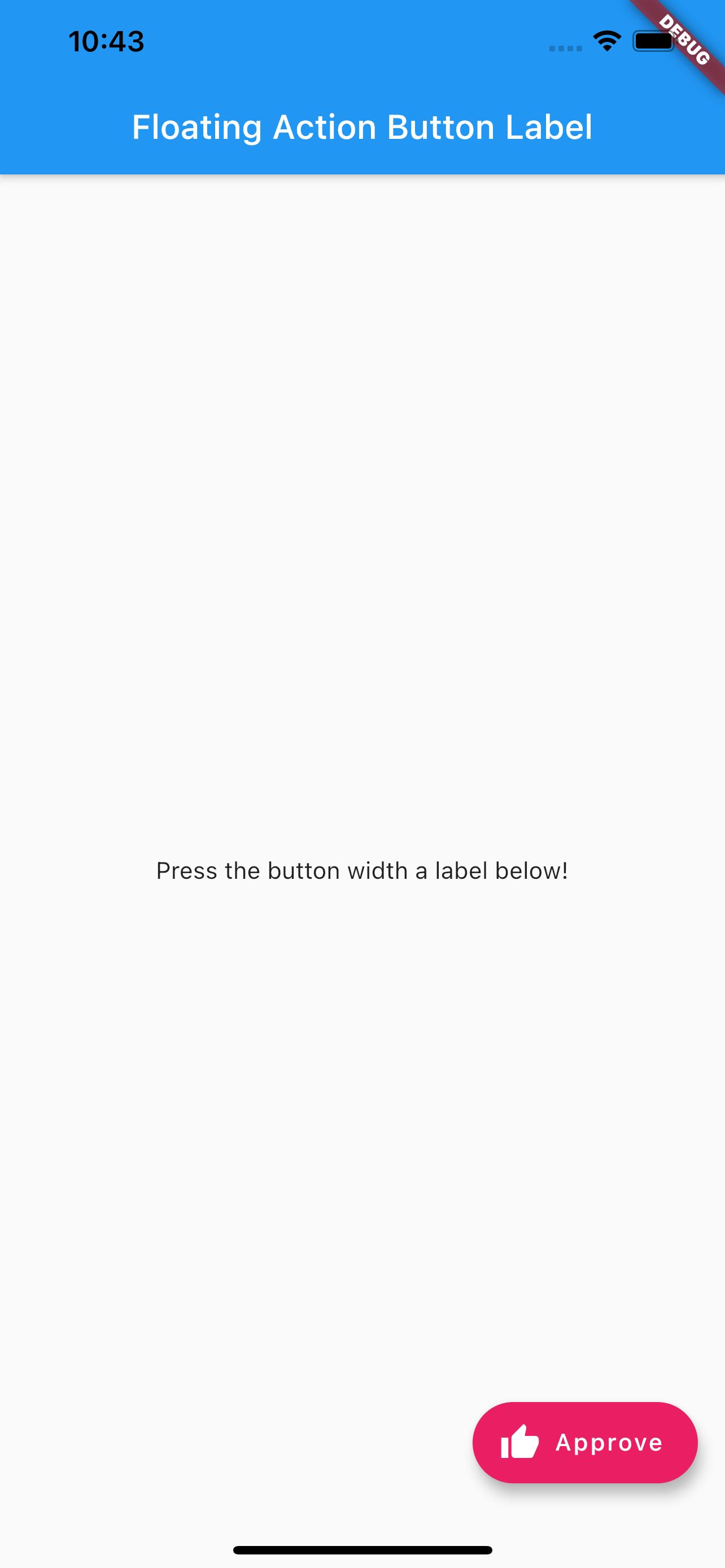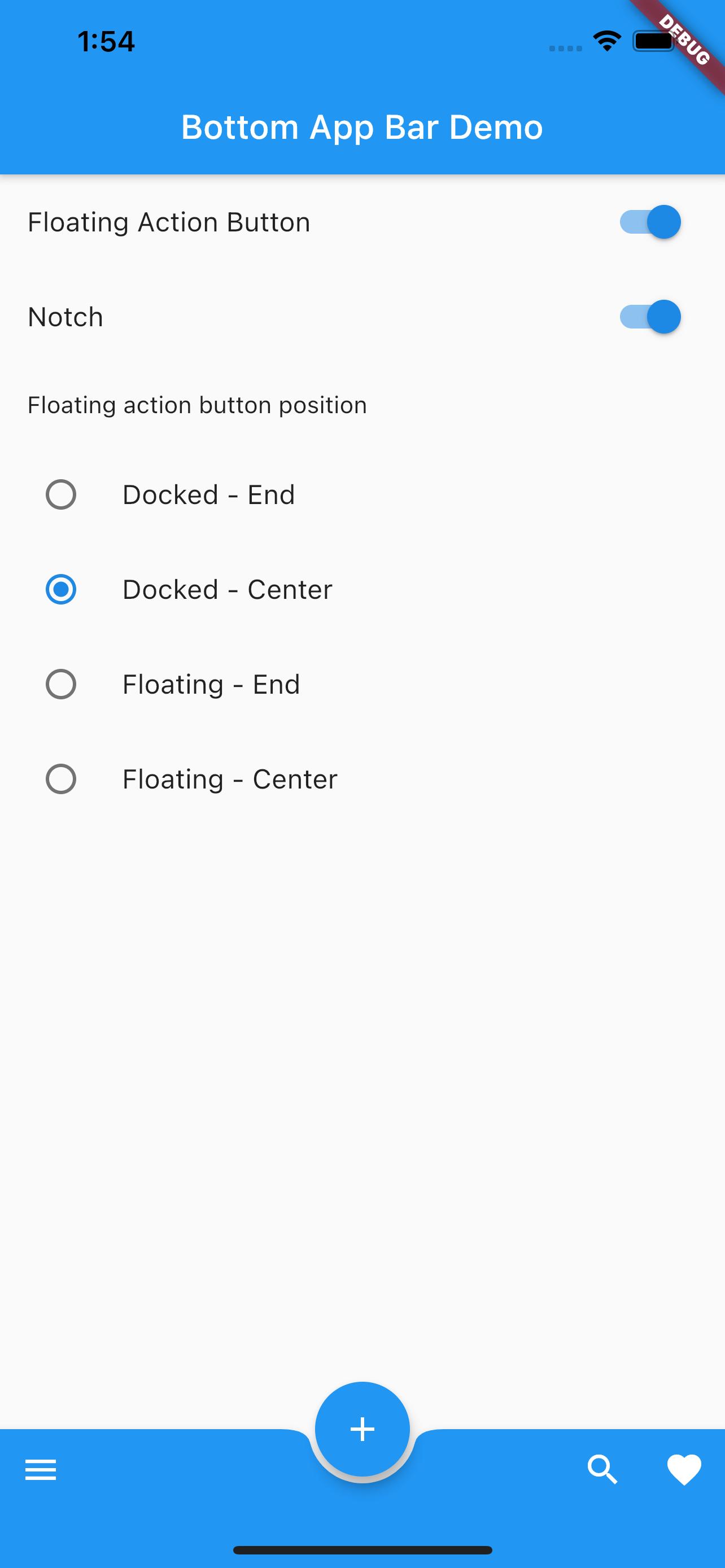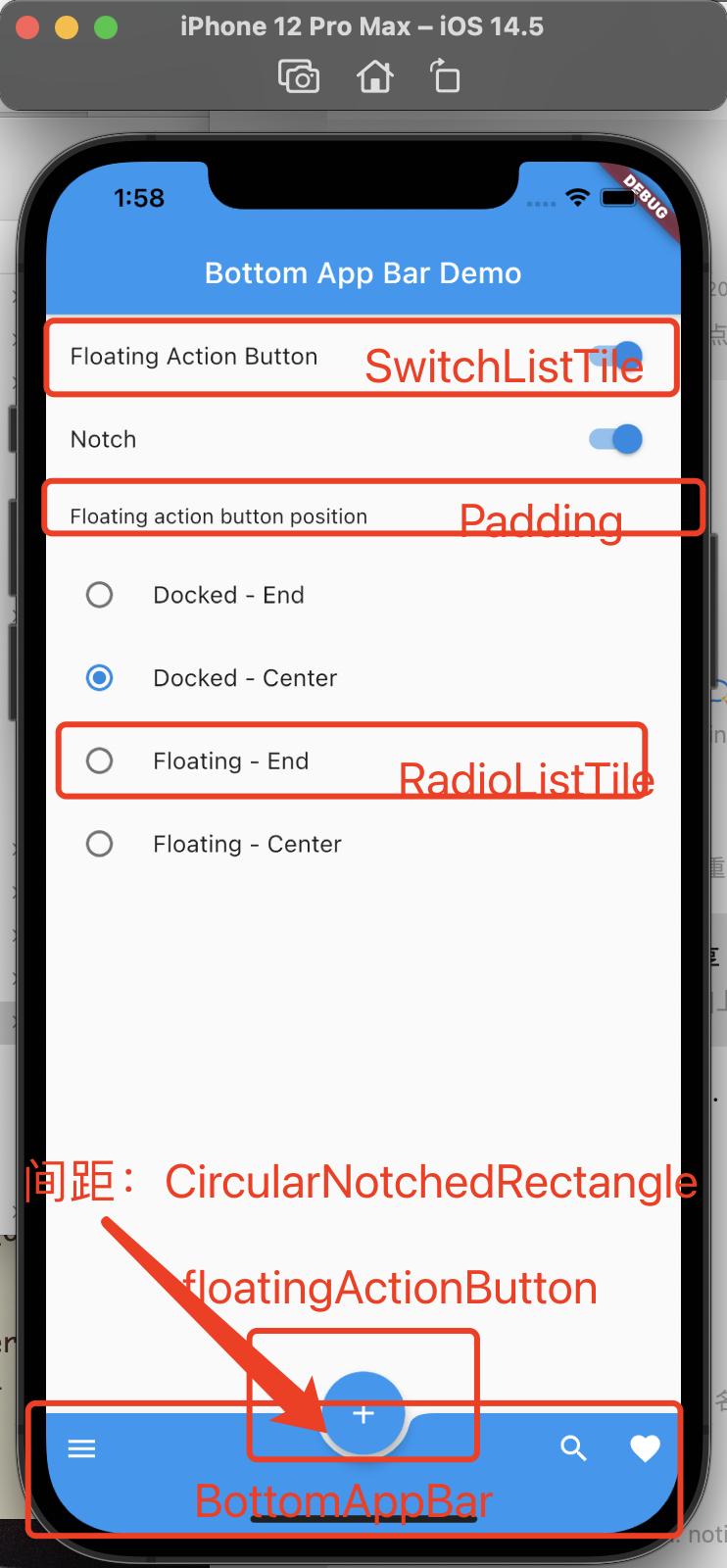Flutter レイアウトの基本 —— カスタム BottomNavigationBar#
背景#
ここでは、不規則な BottomNavigationBar を実装してみます。まず、2 つのシステムコンポーネントを理解します: floatingActionButtonとBottomAppBar
floatingActionButton#
floatingActionButtonは、浮動ボタンを作成するために使用され、2 つのスタイルがあります:1 つは円形の純粋なアイコンで、もう 1 つは楕円形のアイコンまたはテキスト付きです。
以下はその例です:
void main() => runApp(const MyApp());
/// これはメインアプリケーションウィジェットです。
class MyApp extends StatelessWidget {
const MyApp({Key? key}) : super(key: key);
static const String _title = 'Flutterコードサンプル';
@override
Widget build(BuildContext context) {
return const MaterialApp(
title: _title,
home: MyStatelessWidget(),
);
}
}
/// これはメインアプリケーションがインスタンス化するステートレスウィジェットです
class MyStatelessWidget extends StatelessWidget {
const MyStatelessWidget({Key? key}) : super(key: key);
@override
Widget build(BuildContext context) {
return Scaffold(
appBar: AppBar(
title: const Text('浮動アクションボタン'),
),
body: const Center(
child: Text('下のボタンを押してください'),
),
floatingActionButton: FloatingActionButton(
onPressed: () {
// ここにonPressedコードを追加してください!
},
child: const Icon(Icons.navigation),
backgroundColor: Colors.green,
),
);
}
}
表示効果:

void main() => runApp(const MyApp());
/// これはメインアプリケーションウィジェットです。
class MyApp extends StatelessWidget {
const MyApp({Key? key}) : super(key: key);
static const String _title = 'Flutterコードサンプル';
@override
Widget build(BuildContext context) {
return const MaterialApp(
title: _title,
home: MyStatelessWidget(),
);
}
}
/// これはメインアプリケーションがインスタンス化するステートレスウィジェットです
class MyStatelessWidget extends StatelessWidget {
const MyStatelessWidget({Key? key}) : super(key: key);
@override
Widget build(BuildContext context) {
return Scaffold(
appBar: AppBar(
title: const Text('浮動アクションボタンラベル'),
),
body: const Center(
child: Text('下のラベル付きボタンを押してください!'),
),
floatingActionButton: FloatingActionButton.extended(
onPressed: () {
// ここにonPressedコードを追加してください!
},
label: const Text('承認'),
icon: const Icon(Icons.thumb_up),
backgroundColor: Colors.pink,
),
);
}
}
表示効果:

BottomAppBar#
実現したい効果は以下の通りです:

次に、実現方法を分析します:
body は ListView で、ListView の内容は上から下に次のようになります:
- 2 つの
SwitchListTile - 1 つの
Padding - 4 つの
RadioListTile
次にfloatingActionButton
次にBottomAppBar
以下のようになります:

コードは以下の通りです:
void main() {
runApp(const BottomAppBarDemo());
}
class BottomAppBarDemo extends StatefulWidget {
const BottomAppBarDemo({Key? key}) : super(key: key);
@override
State createState() => _BottomAppBarDemoState();
}
class _BottomAppBarDemoState extends State<BottomAppBarDemo> {
bool _showFab = true;
bool _showNotch = true;
FloatingActionButtonLocation _fabLocation =
FloatingActionButtonLocation.endDocked;
void _onShowNotchChanged(bool value) {
setState(() {
_showNotch = value;
});
}
void _onShowFabChanged(bool value) {
setState(() {
_showFab = value;
});
}
void _onFabLocationChanged(FloatingActionButtonLocation? value) {
setState(() {
_fabLocation = value ?? FloatingActionButtonLocation.endDocked;
});
}
@override
Widget build(BuildContext context) {
return MaterialApp(
home: Scaffold(
appBar: AppBar(
automaticallyImplyLeading: false,
title: const Text('Bottom App Barデモ'),
),
body: ListView(
padding: const EdgeInsets.only(bottom: 88),
children: <Widget>[
SwitchListTile(
value: _showFab,
onChanged: _onShowFabChanged,
title: const Text('浮動アクションボタン'),
),
SwitchListTile(
value: _showNotch,
onChanged: _onShowNotchChanged,
title: const Text('ノッチ'),
),
const Padding(
padding: EdgeInsets.all(16),
child: Text('浮動アクションボタンの位置'),
),
RadioListTile(
value: FloatingActionButtonLocation.endDocked,
groupValue: _fabLocation,
onChanged: _onFabLocationChanged,
title: const Text('ドッキング - エンド'),
),
RadioListTile(
value: FloatingActionButtonLocation.centerDocked,
groupValue: _fabLocation,
onChanged: _onFabLocationChanged,
title: const Text('ドッキング - センター'),
),
RadioListTile(
value: FloatingActionButtonLocation.endFloat,
groupValue: _fabLocation,
onChanged: _onFabLocationChanged,
title: const Text('浮動 - エンド'),
),
RadioListTile(
value: FloatingActionButtonLocation.centerFloat,
groupValue: _fabLocation,
onChanged: _onFabLocationChanged,
title: const Text('浮動 - センター'),
),
],
),
floatingActionButton: _showFab
? FloatingActionButton(
onPressed: () {},
child: const Icon(Icons.add),
tooltip: '作成',
)
: null,
floatingActionButtonLocation: _fabLocation,
bottomNavigationBar: _DemoBottomAppBar(
fabLocation: _fabLocation,
shape: _showNotch ? const CircularNotchedRectangle() : null),
),
);
}
}
class _DemoBottomAppBar extends StatelessWidget {
const _DemoBottomAppBar({
this.fabLocation = FloatingActionButtonLocation.endDocked,
this.shape = const CircularNotchedRectangle(),
});
final FloatingActionButtonLocation fabLocation;
final NotchedShape? shape;
static final List<FloatingActionButtonLocation> centerLocations =
<FloatingActionButtonLocation>[
FloatingActionButtonLocation.centerDocked,
FloatingActionButtonLocation.centerFloat,
];
@override
Widget build(BuildContext context) {
return BottomAppBar(
shape: shape,
color: Colors.blue,
child: IconTheme(
data: IconThemeData(color: Theme.of(context).colorScheme.onPrimary),
child: Row(
children: <Widget>[
IconButton(
tooltip: 'ナビゲーションメニューを開く',
icon: const Icon(Icons.menu),
onPressed: () {},
),
if (centerLocations.contains(fabLocation)) const Spacer(),
IconButton(
tooltip: '検索',
icon: const Icon(Icons.search),
onPressed: () {},
),
IconButton(
tooltip: 'お気に入り',
icon: const Icon(Icons.favorite),
onPressed: () {},
),
],
),
),
);
}
}
floatingActionButtonLocationの設定に注意してください。